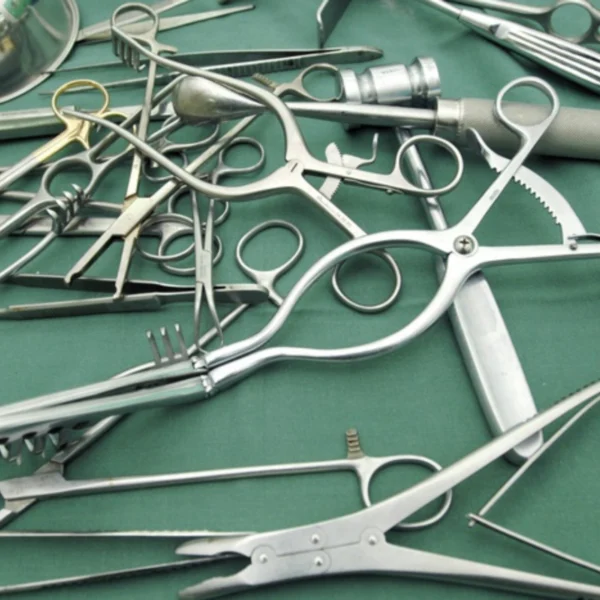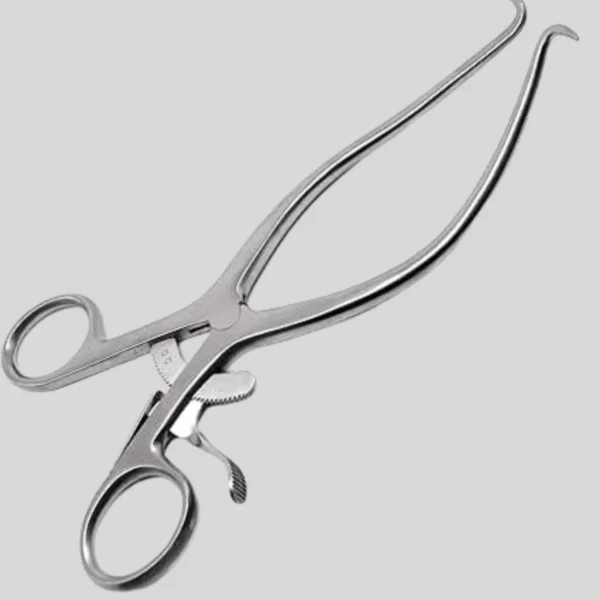- General Surgery Instruments
- Orthopedic & Spine
- Neurosurgical
- Electrosurgical
- Non-Stick Bipolar Forceps
- European Irrigation Bipolar Forceps
- Monopolar Cables
- USA 2 Pin Bipolar Forceps
- European Non-Stick Bipolar Forceps
- Bipolar Artery Sealer
- Diathermy Instruments
- Bipolar Electrodes
- Disposable Bipolar Forceps
- Electrodes 4.0mm
- Electrosurgical For Gynecology
- European Bipolar Forceps
- Gynecology
- ENT
- Cardiovascular
Retractors
Unveiling Surgical Excellence: Retractors by Surgivalley.
Surgical retractors are important equipment that keep cuts or wounds open so surgeons may see clearly and reach tissues and organs underneath without problems. At Surgivalley, we make a wide selection of retractors to meet the needs of different types of surgery. Moreover, our sophisticated lighted retractors include built-in lights that improve mobility and visibility, even in deep or minimally invasive surgical sites. Each retractor is crafted from high-quality materials to ensure durability, comfort, and accuracy, supporting the best surgical results.
THE APPLICATIONS OF SURGICAL RETRACTORS
It is very important to choose the right retractor blade for surgery since not all blades serve the same purpose. Selecting the right one ensures safety, visibility, and accessibility during the procedure. There are two primary types of surgical retractors:
Manual Hand Retractors: These require constant handling during the process to keep the surgical site open. The surgical assistant, robotic arm, or surgeon performs this task.
Self-Retaining Retractors: These remain in place without constant support. They use mechanisms such as ratchets, screws, or clamps to hold tissue securely away from the surgical area. This hands-free feature allows doctors to use both hands more effectively during critical surgical activities.


GELPI RETRACTOR
The Gelpi Retractor is a specialized self-retaining surgical instrument commonly used in spinal and orthopedic procedures to maintain clear exposure of the site. In spinal surgery, the chosen approach—anterior, lateral, or posterior—determines the specific tools required for optimal access and precision.
Anterior Approach: The surgeon accesses the spine from the front of the body. It is often applied in certain cervical and lumbar procedures.
Lateral Approach: Entry from the side of the body allows targeted access to spinal segments while minimizing disruption to nearby structures.
Posterior Approach: This approach from the back provides direct visualization for many decompression and fusion surgeries.
Crafted from high-grade stainless steel, the Gelpi Retractor ensures secure tissue separation. It helps surgeons operate efficiently while minimizing trauma to surrounding areas.
The lateral approach, often linked to minimally invasive spinal surgery, offers significant patient benefits. This technique effectively relieves leg or back pain and treats conditions such as degenerative disc disease. Its main advantage is accessing the spine from the side, which avoids disruption of major back muscles.
Unlike traditional methods requiring a large incision and splitting of spinal muscles—which often prolong recovery—the lateral approach uses a smaller, targeted incision. Through this incision, the surgeon removes the damaged disc or joint and replaces it with a bone graft, usually taken from the patient’s own bone. As a result, bone fusion becomes faster and more reliable than with conventional techniques.
Because of its efficiency, reduced muscle trauma, and shorter recovery period, minimally invasive lumbar spine fusion performed via the lateral approach continues to gain popularity among surgeons and patients.


